
The transformation of the Roman Empire from the classical period to a Christian society has been well studied. One estimate is that ten per cent of the Roman world was Christian by AD 300, although what it meant to be a Christian at this date is impossible to ascertain. The communities were scattered and each had a different relationship with sacred texts and Judaism, while their understandings of Jesus Christ were diverse.
An unexpected turning point came in 312-13 when the emperor Constantine used state authority to privilege his own understanding of Christianity above others (this was at a time when the majority of his subjects still followed traditional beliefs). At a council held at Nicaea in 325, there was the first formulation of a creed (a preliminary version of the Nicene Creed), although it was only in the reign of Theodosius (ruled 379-395) that Christianity became the state religion based on a Trinitarian doctrine in which Christ, the Holy Spirit, and God were seen as one. In 380, Theodosius declared that those of other Christian beliefs were ‘demented and insane’ heretics. This was what the historian Peter Heather calls ‘the Romanization of Christianity’ and it made Christianity an authoritarian religion entwined with the authoritarian Roman state. Yet recent scholarship has confirmed the weakness of the state in enforcing compliance. It was all very well issuing fearsome imperial decrees but ‘pagan’ and ‘heretical’ cults survived for decades. Recent works by Heather (Christendom, 2022) and Edward Watts (The Final Pagan Generation, 2015) chart the transformation.
After AD 380, a hierarchy of orthodox bishops attempted to enforce a canon of texts and doctrines such as the Trinity. Independent reasoning waned as the structure of Christian authority gradually emerged. In this sense, there was a true Closing of the Western Mind (the title of my study, published in 2002), though Christian theologians such as Augustine and Ambrose, the formidable bishop of Milan, still drew on ‘pagan’ texts for support. Basil of Caesarea went so far in the 360s as to argue that ‘young men’ should master these texts before embarking on biblical studies. Platonism, rather than being suppressed, provided the intellectual backbone of theology. Christians adopted Plato’s Timaeus with its ‘craftsman god’.
The spread of Christianity through Europe was a complex process, with some Christianities infiltrating peacefully (Ireland) and others succeeding by violent coercion (Saxony at the hands of Charlemagne). The late Valerie Flint in her The Rise of Magic in Early Medieval Europe (1991) showed how Christianity was forced to compromise with traditional pre-Christian customs to become embedded. It might not have been until 1215, with the Fourth Lateran Council, that Christian uniformity was fully imposed on Europe.
In The Darkening Age: The Christian Destruction of the Classical World (2017), Catherine Nixey provides a vivid and passionate narrative of this transformation. She has little time for the political transformation from above—there is hardly a mention of Theodosius, who imposed the Trinity and completed the ‘Romanization of Christianity’. She bypasses the links between traditional Roman authority and the coming of the new religion.
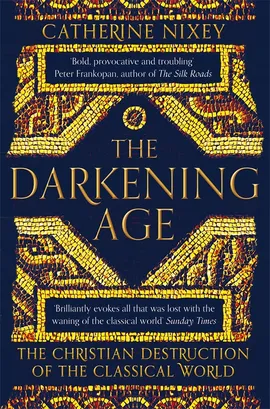
Instead, her Christians appear to come from nowhere, like some fanatical sect emerging from across the Steppes. (Chapter One is aptly titled ‘The Invisible Army’.) These Christians are tormented by demons. They destroy statues, burn books, and dismantle temples. Nixey highlights the minority of those dedicated to this destruction. ‘Classical literature was filled with the incorrect and demonic and it came under repeated and vicious attack from the Church Fathers’. Monks were ‘vulgar, stinking, ill-educated and violent’. In Chapters Fourteen to Fifteen, Nixey portrays the joyless and aggressive behaviour of monks as if they all shared a commitment to overthrow the classical world. There are several passages in which Saint Martin of Tours burns ‘pagan’ shrines. In contrast, the influential Gregory the Great (pope 590-604) gets no acknowledgement for his advice to sprinkle holy water on ‘pagan’ shrines and reuse them.
In true journalistic style, Nixey dwells emotively on the destruction of ‘paganism’, muddling Latin and Greek Christianities and pre-and post-Constantinian Christianity. (There are very few dates she provides to establish any context, but her examples range from the second to the sixth centuries and across a variety of Christianities.) She assumes that the empire with its longstanding traditions and structures of authority was fragile, so that, by the sixth century, ‘an entire religious system [‘paganism’] had been all but wiped from the face of the earth’. Violence was part of everyday life in the late empire, so the activities of the more obsessive Christians have to be seen within that context. Papyrus scrolls are vulnerable to dampness and fire but the loss of classical literature is attributed by Nixey largely to the Church: ‘What ensured the near total destruction of all [sic] Latin and Greek literature was a combination of ignorance, fear and idiocy.’ Nixey assumes the Christian destruction of the library at Alexandria, even though it is probably mythical.
Recent scholars of late antiquity have been disturbed by Nixey’s polemic. Yet The Darkening Age has also received rave reviews from those who enjoy feisty dissent from conventional views. The book is seen as challenging a still-rosy picture of Christianity spreading peacefully throughout the Roman Empire and beyond and some reviewers have drawn comparisons between Nixey’s Christians and religious fanatics of the twenty-first century. Yet, other than Julian, emperor for a short time (361-63), all emperors after Constantine were professed Christians and upheld Roman authority. As the works of Peter Brown have shown, a much more nuanced narrative of the narrowing of Western thought is possible.
To be sure, there were dour ascetics among the Christians, but others enjoyed married life and employed slaves. Fifth-century aristocrats such as Sidonius Apollinaris, later to be bishop of Clermont, decried the loss of Latin learning. There is very little of this in Nixey’s narrative and there is no distinctive treatment of the very different fate of the Greek East. I know many of the texts she quotes, and I used some of them in my The Closing of the Western Mind, but they ignore the gradual process by which most of the subjects of the empire accepted Christianity.
Emboldened by her success, Nixey has now written Heresy: Jesus Christ and the Other Sons of God. This book is primarily an analysis of early tales about Jesus. As in The Darkening Age, Nixey too often assumes that she is breaking new ground, but I have a score of books on my shelves (notably those by Bart Ehrman) which contain similar, if less polemical, analyses. (And, to give her credit, she does mention William Hone, who, in the nineteenth century, discovered many of the apocryphal gospels.) Despite her wide reading, Nixey has again failed to realise how Christianity was integrated within the Roman state. There is not a mention of Theodosius, who finalised and imposed the doctrine of the Trinity in 381 and attempted to ban ‘pagan’ practices in the 390s. Chapter Twelve, ‘On Laws’, discusses the late (438) Theodosian Code, a compilation of imperial laws since the reign of Constantine over a hundred years earlier, but the relevance of this to her argument is unclear.
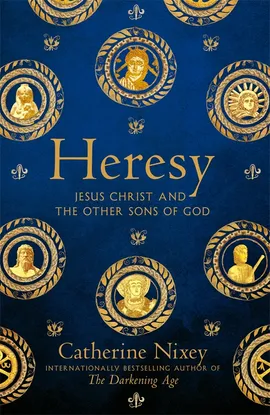
Without the impositions of emperors and the privileges it brought, Christianity was unlikely to have become as dominant as it did. Through councils over which they presided, the emperors brought order, and thus orthodoxy, to the religion. In fact, there were some previous attempts to consolidate the sacred texts, as in Irenaeus’ influential Adversus Haereses of c. 180 (which is mentioned by Nixey), which highlighted the four gospels as canonical, primarily because they were so early. One cannot have it both ways. If Heresy is about the sheer variety of tales about Jesus and other ‘holy men’, one cannot complain about attempts to define which of these tales were orthodox and which were not. Nixey quotes Celsus’ second-century attacks on Christianity but she never mentions that these quotes are reproduced by the brilliant biblical scholar Origen, who also responds to many of them.
Nixey has a knack for evoking atmospheres and Heresy is full of lively images. She writes very well and many readers will enjoy her book. Heresy is more nuanced than The Darkening Age: there is a greater awareness of alternative views and she draws on more varied sources. However, this makes the book unstructured. Each chapter deals with a different theme. Rome, and Roman authors, are often described but there is little attempt to distinguish between the Greek world (of the New Testament texts) and the Latin West, where definitive translations of the scriptures had to wait until Jerome’s Vulgate in the fourth century. In Chapter Eight, ‘Fruit from a Dunghill’, there is a well-written discussion of travel in the Roman Empire but, other than linking this diversion to the travels of Paul, it does not make any contribution to the argument. Chapter Nine, ‘Go into the World’, continues the theme with travel to the East. There are other diversions, too, for example with the historian and philosopher Plutarch’s account of the afterlife of Thespesius and the discovery by George Smith in the nineteenth century of part of The Epic of Gilgamesh in the cuneiform tablets he was deciphering. It often feels as if Nixey has exhausted her main theme and is resorting to padding.
In the final chapters of Heresy, Nixey returns to the main themes of The Darkening Age: Christians extirpating ‘paganism’ and committing violence between themselves. Her books are more journalistic than scholarly. They will appeal to those who have suffered an unhappy experience with Christianity but they risk being historically unbalanced, and even misleading. There were extremists who took delight in attacking the symbols of traditional Roman and Greek religion, but most conversions happened gradually and there were compromises with traditional values in which Christianity made little difference to social life—even to the continuing ownership of slaves (as Nixey acknowledges).
I felt that Heresy, in particular, failed to establish a coherent argument. If Jesus made an impact within the Greek world, it is not surprising that many sources elaborated on the legends that had accumulated around him. It was right that Irenaeus sought to establish orthodoxy from the earliest gospel texts, for Christianity would never have survived if it had not brought order to its theology—even if, to this writer at least, it also brought a closing of the Western mind. It is just that this narrowing was a much subtler process than Nixey would have it.
Related reading
‘The Greek mind was something special’: interview with Charles Freeman, by Daniel James Sharp
Against the ‘New Theism’, by Daniel James Sharp
Image of the week: Filippino Lippi’s ‘Triumph of St Thomas Aquinas over the Heretics’, by Daniel James Sharp
The Enlightenment and the making of modernity, by Piers Benn
New Atheism, New Theism, and a defence of cultural Christianity, by Jack Stacey
What has Christianity to do with Western values? by Nick Cohen
Do we need God to defend civilisation? by Adam Wakeling



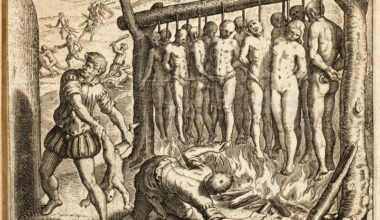

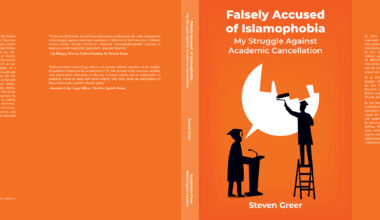
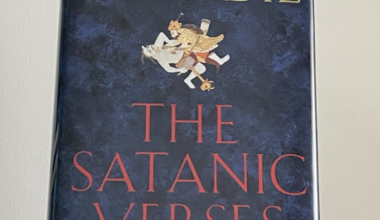
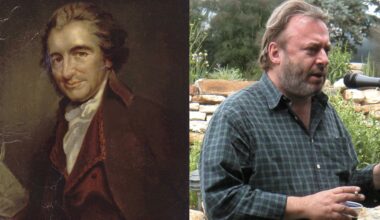
Your email address will not be published. Comments are subject to our Community Guidelines. Required fields are marked *
Donate